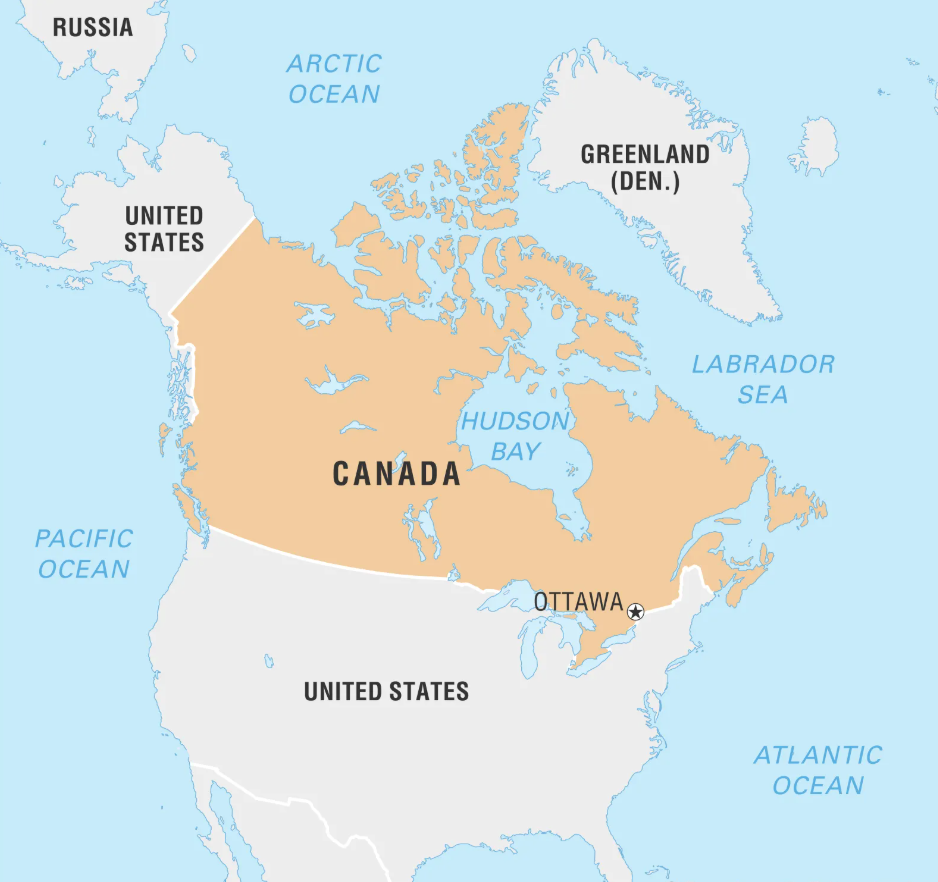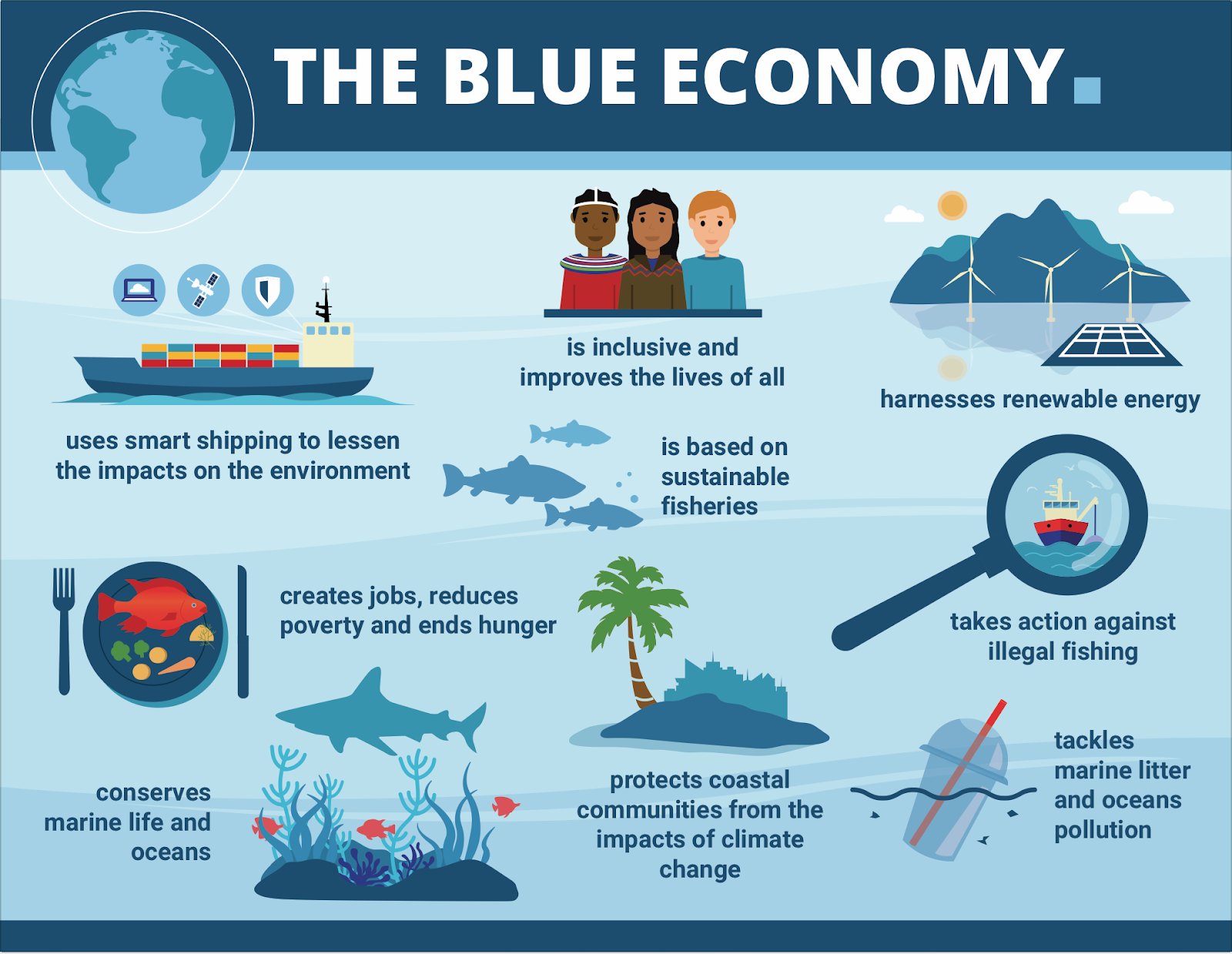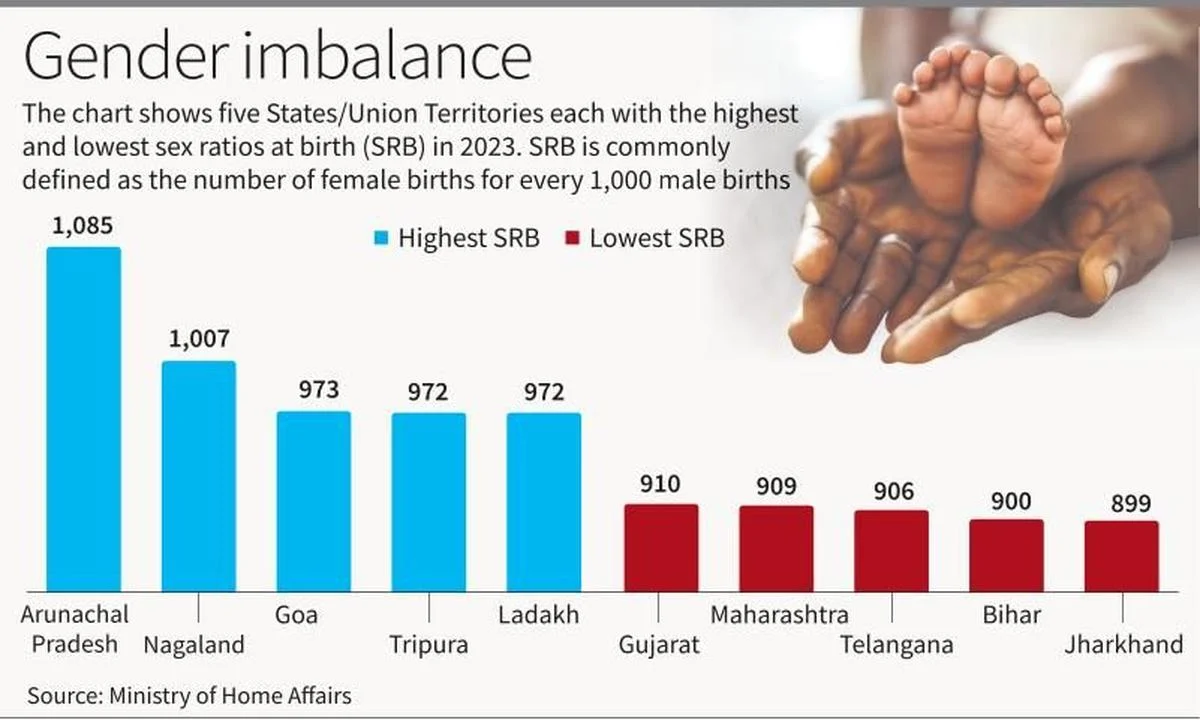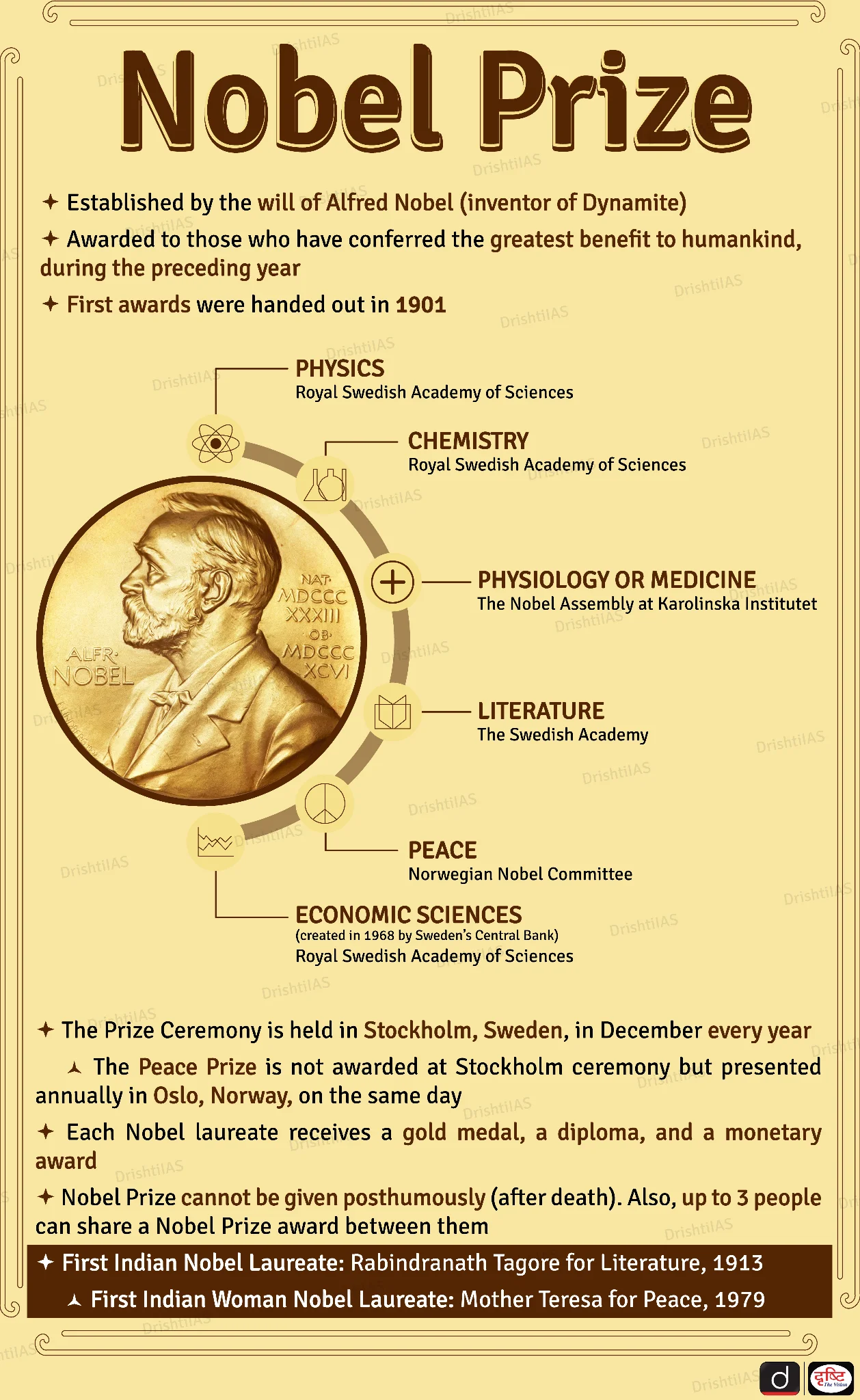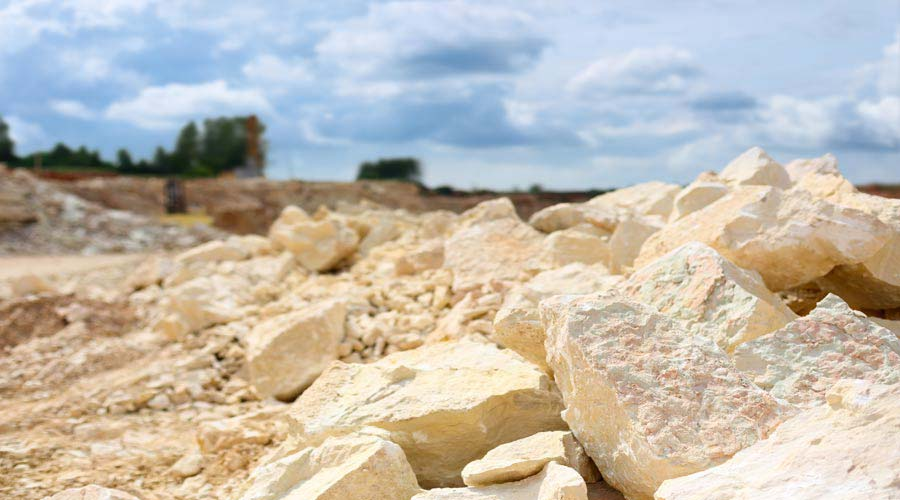International Relations
Resetting India-Canada Ties
For Prelims: Critical Minerals, Green Hydrogen, Biofuels, Carbon Capture, AI Impact Summit 2026, ANTRIX, Five Eyes, Quad, Quantum Computing, Semiconductors.
For Mains: Dynamics of India-Canada relations and associated challenges, Role of diaspora, and the impact of bilateral agreements on India's foreign policy and national security.
Why in News?
India and Canada have agreed on a series of measures to restore bilateral relations, as announced in a joint statement titled ‘Renewing Momentum Towards a Stronger Partnership’ by their foreign ministers.
What are the Key Highlights of India-Canada Joint Statement on Strengthening their Partnership?
- Adoption of New Roadmap: It is a new framework for the relationship, based on mutual respect, shared democratic values, rule of law, sovereignty, and territorial integrity, aiming to restore stability and build a constructive partnership.
- Trade and Economic Cooperation: The Canada-India CEO Forum will resume in early 2026. Ministerial talks will focus on boosting bilateral trade and investment, with priority given to clean technology, infrastructure, agri-food, and digital innovation.
- Clean Energy & Climate Action: To advance energy cooperation, a Critical Minerals Annual Dialogue will begin in March 2026, and the Canada-India Ministerial Energy Dialogue (CIMED) will be revived.
- Collaboration will focus on green hydrogen, biofuels, Carbon Capture, and electric mobility.
- Science, Technology, and Digital Ties: The Joint Science and Technology Cooperation Committee (JSTCC) will be restarted. In AI collaboration, Canada will join India's AI Impact Summit 2026, and both countries will explore digital public infrastructure cooperation.
- People-to-People Links: Both nations committed to refreshed collaboration in higher education, including AI and cybersecurity research and exploring Canadian university campuses in India.
- To facilitate this, the Joint Working Group on Higher Education will be revitalized to expand academic networks.
What are the Key Highlights of India-Canada Bilateral Relations?
- Economic & Trade Partnership: Bilateral trade in goods and services exceeded 26 billion Canadian dollars (CAD) in 2023. Significant investments are highlighted by over CAD 75 billion from Canadian pension funds and a presence of over 600 Canadian companies in India.
- Energy & Civil Nuclear Cooperation: Under the Nuclear Cooperation Agreement (2010), Canada is a key uranium supplier to India. A separate ministerial-level Energy Dialogue covers oil, gas, renewables, electricity, and clean technologies.
- Security & Legal Frameworks: Security collaboration is based on a Joint Working Group (JWG) on Counter Terrorism (1997) and a Framework for Cooperation on Countering Terrorism (2018), while legal cooperation is strengthened by an Extradition Treaty (1987) and a Mutual Legal Assistance Treaty (1994).
- Science & Technology: ISRO and the Canadian Space Agency (CSA) have MoUs, and ISRO’s commercial arm, ANTRIX, has launched several Canadian nanosatellites.
- People-to-People & Educational Links: Canada hosts one of the largest Indian diasporas abroad, with nearly 1.8 million people of Indian origin contributing significantly to society and economy. India is also a top source of international students for Canada, with about 427,000 Indian students studying there.
What are the Major Challenges in India-Canada Relations?
- Khalistan Issue: India accuses Canada of allowing Khalistani separatists to operate freely—organizing rallies, glorifying violence, and funding activities to destabilize India.
- India views it as a national security threat and blames Canada for inaction against incitement and foreign interference.
- Trade and Economic Disruptions: Due to the political rift, negotiations for a Comprehensive Economic Partnership Agreement (CEPA) have been officially paused since 2023 and are effectively frozen.
- The diplomatic fallout has created an unpredictable environment, discouraging new investments and partnerships.
- Diplomatic Strain: The public accusations, expulsions, and pause in official dialogues have eroded the foundational trust necessary for a functional bilateral relationship.
- Strategic Misalignment: India leads in countering Chinese influence in the Indo-Pacific and is a key Quad member, while Canada’s approach to China is inconsistent, balancing economic interests and security concerns.
- Canada’s foreign policy aligns with Five Eyes partners (US, UK, Australia, NZ), whereas India-US relations involve a complex balance, especially regarding Russia.
- Divergence in Global Governance: Canada emphasizes a rules-based international order with focus on human rights and international law, while India supports these principles but prioritizes strategic autonomy, national development, and reformed multilateralism, viewing institutions like the UN Security Council as outdated.
What Measures can be Taken to Strengthen India-Canada Relations?
- Diplomatic Recalibration: Establish a Bilateral Security and Sovereignty Dialogue at the National Security Advisor level to address Khalistani extremism with protocols for intelligence sharing, and legal cooperation.
- Institute a 2+2 Dialogue Mechanism to bridge strategic misalignment on Indo-Pacific security, counter-terrorism, and maritime cooperation.
- Economic Integration: Adopt a time-bound, sector-specific approach with Early Harvest Agreements in less contentious sectors like clean technology, agri-tech, and digital services to revive CEPA.
- Technological Cooperation: Fast-track the Critical Minerals Dialogue and energy talks to position Canada as a key partner in India's green transition through technology and financing for Green Hydrogen, and electric mobility.
- Establish an India-Canada Innovation Bridge to foster collaboration between startups, venture capital, and joint R&D in quantum computing, cybersecurity, and semiconductors.
- Strengthening the Human Capital: Pursue Canadian university campuses in India under the new Foreign Educational Institutions (FEI) regulations, 2023, focusing on joint/dual degree programs and research in STEM fields to enhance educational exchange.
- Engage the 1.8 million-strong Indian diaspora by deepening cultural ties through expanded festivals, art, and film collaborations.
Conclusion
The renewed India-Canada engagement, anchored by the 2025 joint statement, aims to restore trust, drive economic synergy, advance technological and clean energy cooperation, and deepen people-to-people bonds. Overcoming legacy challenges through structured dialogues and sectoral integration offers both nations a blueprint for sustainable, future-ready bilateral relations.
|
Drishti Mains Question: Discuss the major irritants in India-Canada ties post-2023 and suggest viable diplomatic and economic measures for their resolution. |
Frequently Asked Questions (FAQs)
1. What is the India-Canada Joint Statement 2025?
It is a roadmap titled Renewing Momentum Towards a Stronger Partnership, aiming to restore bilateral relations through trade, energy, technology, and people-to-people ties.
2. What are the major challenges in India-Canada relations?
Key challenges include Khalistani extremism, stalled CEPA negotiations, diplomatic strain, strategic misalignment on China, and divergence in global governance priorities.
3. What is the significance of the proposed Critical Minerals Annual Dialogue?
This dialogue is vital for India's green energy transition, securing a mineral supply chain for batteries, EVs, and renewable technologies, with Canada as a resource-rich partner.
UPSC Civil Services Examination, Previous Year Question (PYQ)
Prelims
Q. Consider the following statements with regard to the G7:
- The G7 is a formal grouping of leading industrialised nations.
- The European Union has been part of all working sessions of the G7 since the 1981 Ottawa Summit.
- The Group of Eight was constituted in 1998 as Russia became a member of the grouping.
How many of the statements given above are correct?
(a) Only one
(b) Only two
(c) All three
(d) None
Ans: (b)
Q. In which one of the following groups are all the four countries members of G20? (2020)
(a) Argentina, Mexico, South Africa and Turkey
(b) Australia, Canada, Malaysia and New Zealand
(c) Brazil, Iran, Saudi Arabia and Vietnam
(d) Indonesia, Japan, Singapore and South Korea
Ans: (a)


Facts for UPSC Mains
Unlocking India’s Deep-Sea and Offshore Fisheries
Why in News?
NITI Aayog has released a comprehensive report titled “India’s Blue Economy: Strategy for Harnessing Deep-Sea and Offshore Fisheries”, outlining a roadmap to sustainably unlock the vast potential of India’s marine resources, and strengthen the Blue Economy.
What are the Key Highlights of NITI Aayog’s Report on India’s Blue Economy?
- Unlocking India’s Untapped Marine Potential: India is the second-largest fish-producing nation, contributing 8% of global fish output. Fisheries support around 30 million livelihoods in the country. In FY 2023–24, fishery products exports earned Rs 60,523 crore.
- Despite this, deep-sea resources beyond the continental shelf remain largely unexploited.
- India’s Exclusive Economic Zone (EEZ) of over 2 million sq. km holds an estimated potential yield of 7.16 million tonnes.
- Harnessing these resources can reduce pressure on coastal fisheries, boost exports, and create employment.
- Roadmap for Harnessing India’s Fisheries: The NITI Aayog report envisions a three-phase roadmap to unlock India’s deep-sea fisheries potential through policy reform, technology, infrastructure, and sustainable practices.
- Phase 1 (2025–28) (Foundation and early growth): It focuses on setting up strong policy frameworks, building capacity through training and modern infrastructure, and launching pilot projects to test deep-sea fishing models.
- Phase 2 (2029–32) (Scaling up and achieving global competitiveness): Aims to expand fleets, upgrade harbours and processing facilities, and strengthen India’s presence in global seafood markets through innovation and sustainability.
- Phase 3 (2033 onwards) (Global leadership in sustainable deep-sea fisheries): It envisions India emerging as a world leader in sustainable deep-sea fisheries by promoting high-value products, ecosystem-based management, and international collaborations.
What are the Key Challenges in India’s Deep-sea and Offshore Fisheries Highlighted by NITI Aayog?
- Lack of Scientific Stock Assessment: Inadequate data and limited use of modern tools like remote sensing, sonar, and AI for mapping deep-sea resources can lead to overfishing and unsustainable exploitation of marine resources.
- Overfishing, bycatch, and marine pollution threaten ecosystem health and can cause long-term decline of fish stocks and marine biodiversity.
- Weak Infrastructure: Poor harbour facilities, insufficient landing centres, and limited cold chain and processing capacity cause post-harvest losses, reduced fish quality, and lower export potential.
- Technological Gaps: Most vessels lack modern fish-finding equipment, vessel monitoring systems (VMS), and selective fishing gear leading to inefficient fishing, high bycatch, and compromised sustainability.
- Limited Access to Finance: Fisher cooperatives and small operators face difficulties getting institutional credit or insurance coverage resulting in underinvestment in technology and risk mitigation.
- Current subsidies and schemes are fragmented and not designed for deep-sea operations leading to slow adoption of green technologies and fleet modernisation.
- Outdated Legal Framework: Existing laws regulate only coastal waters up to 12 nautical miles, leaving deep-sea areas poorly governed which creates loopholes and weak enforcement of sustainable fishing.
- Limited vessel tracking, lack of observer programs, and poor coordination among enforcement agencies allow illegal, unreported, and unregulated (IUU) fishing to persist.
- Cross-border fishing and weak surveillance in sensitive maritime zones pose risks to maritime security and the safety of fishers.
- Fragmented policy alignment with SDGs: Lack of integration between fisheries policies and global sustainability goals such as SDG 14 (Life Below Water) hampers holistic development and conservation of marine resources.
What are the Recommendations of NITI Aayog for India’s Deep-Sea and Offshore Fisheries?
- Policy & Regulation: Establish a dedicated legal framework aligned with international standards (UNCLOS). Streamline licensing, registration, access policies, and incentives to ensure sustainable and inclusive fishing.
- Empower institutions for effective monitoring, control, and surveillance (MCS&E).
- Institutional Strengthening & Capacity Building: Create a dedicated agency or directorate under the Department of Fisheries for deep-sea governance.
- Enhance research, data collection, stock assessments, and advisory services with specialized vessels and infrastructure.
- Promote export-oriented cooperatives to leverage collective resources and market power.
- Fleet Modernisation & Infrastructure: Support modern vessels with refrigeration, onboard processing, and eco-friendly technology.
- Upgrade deep-sea fishing harbours, landing centres, cold chains, and post-harvest infrastructure. Promote collective ownership models for small-scale fishers through cooperatives and clusters.
- Sustainable Fisheries Management: Implement marine spatial planning, marine protected areas, and total allowable catch limits.
- Mandate bycatch reduction technologies and habitat protection measures.
- Deploy real-time monitoring, traceability systems, and eco-labeling for sustainable practices.
- Financing & Resource Mobilisation: Establish a Deep-Sea Fishing Development Fund through Pradhan Mantri Matsya Sampada Yojana (PMMSY) and industry contributions. Encourage public-private partnerships in vessels and infrastructure development.
- Explore soft loans or viability gap funding for green technologies.
- Implementation Mechanism: Launch a Deep-Sea Fishing Program (DSFP) with a dedicated Programme Management Unit. Establish an advisory council of maritime states and relevant agencies for guidance and monitoring.
Conclusion
In line with PMMSY and SDG 14, NITI Aayog’s recommendations aim to ensure sustainable growth, ecosystem conservation, and inclusive development in India’s deep-sea and offshore fisheries.
|
Drishti Mains Question: Examine the potential of India’s deep-sea and offshore fisheries and discuss the challenges in harnessing these resources sustainably. |
Frequently Asked Questions (FAQs)
1. What is the Exclusive Economic Zone (EEZ)?
The EEZ is a maritime zone up to 200 nautical miles from the coast, where a country has rights to explore, use, and manage resources like fisheries, oil, and minerals.
2. What is the estimated potential yield of India’s Exclusive Economic Zone (EEZ)?
India’s EEZ spans over 2 million sq. km with an estimated potential yield of 7.16 million tonnes, highlighting untapped deep-sea resources.
3. What are the key challenges in India’s deep-sea and offshore fisheries?
Challenges include lack of scientific stock assessment, weak infrastructure, technological gaps, high operational costs, limited finance, outdated legal frameworks, unsustainable fishing, and weak monitoring.
4. How does NITI Aayog propose to modernise India’s fishing fleet and infrastructure?
Through support for modern vessels with refrigeration, onboard processing, deep-sea harbours, landing centres, cold chains, and cooperative-based ownership models.
UPSC Civil Services Examination, Previous Year Question (PYQ)
Prelims
Q. Which one of the following is a filter feeder? (2021)
(a) Catfish
(b) Octopus
(c) Oyster
(d) Pelican
Ans: (c)
Mains
Q. Defining blue revolution, explain the problems and strategies for pisciculture development in India. (2018)


Facts for UPSC Mains
India’s Vital Statistics Report 2023
Why in the News?
The Registrar General of India (RGI) released the “Vital Statistics of India based on Civil Registration System (CRS)” report for 2023. The report highlighted a decline in birth registrations and a marginal increase in death registrations.
What are the Key Findings of the Vital Statistics Report 2023?
- Birth and Death Trends; India registered 2.52 crore births in 2023, about 2.32 lakh fewer than in 2022, indicating a slight decline in the overall birth rate.
- The number of registered deaths stood at 86.6 lakh in 2023, a minor increase from 86.5 lakh in 2022.
- There had been a sharp spike in 2021, with 1.02 crore deaths - an excess of nearly 21 lakh deaths from 2020, coinciding with the second wave of COVID-19.
- Sex Ratio at Birth (SRB): SRB refers to the number of female births per 1,000 male births.
- Lowest SRB: Reported in Jharkhand (899), followed by Bihar (900), Telangana (906), Maharashtra (909), Gujarat (910), Haryana (911), and Mizoram (911).
- Highest SRB: Arunachal Pradesh led with a sex ratio of 1,085 females per 1,000 males, followed by Nagaland (1,007), Goa (973), Ladakh and Tripura (972 each), and Kerala (967).
- Institutional Births: About 74.7% of total registered births in 2023 occurred in health institutions, reflecting gradual improvement in maternal and neonatal healthcare access. Overall registration of births for the year 2023 stood at 98.4%
- Timely registration refers to births registered within 21 days of occurrence.
What are the Reasons for the Skewed Sex Ratio in India?
- Gender Bias: A deep-rooted cultural preference for male heirs continues to dominate Indian society, where females are often perceived as subordinate. This gender bias manifests in unequal access to education, healthcare, and even survival opportunities for girls.
- Son Preference: Sons are traditionally viewed as future caretakers of parents and the principal economic supporters of the family. This belief reinforces the preference for male children, leading to discriminatory practices against female births.
- Social Practices: Patriarchal customs, particularly the practice of dowry, further discourage families from raising daughters. The financial burden associated with marriage often makes sons appear as economic assets, while daughters are seen as liabilities.
- Rising Income Paradox: Contrary to expectations, the rise in per capita income over the past six decades has not improved the sex ratio. Instead, higher income and literacy levels have made sex-selective technologies more accessible, thereby worsening gender imbalance in several regions.
What Measures can be taken to Improve Sex Ratio in India?
- Behavioural Change: Long-term improvement requires a transformation in social attitudes.
- Government initiatives such as the Beti Bachao Beti Padhao campaign should be further strengthened to promote gender equality and challenge patriarchal mindsets.
- Youth Sensitization: Reaching out to the youth through reproductive health education and awareness programmes is crucial.
- The services of Accredited Social Health Activists (ASHA) can be effectively leveraged in rural areas to spread awareness and encourage equitable practices.
- Law Enforcement: A stronger legal framework is essential to curb sex-selective practices. The Pre-Conception and Pre-Natal Diagnostic Techniques (PCPNDT) Act, 1994 must be implemented strictly.
- Additionally, the recent decision of the Drugs Technical Advisory Board to include ultrasound machines under the Drugs and Cosmetics Act is a welcome step towards preventing their misuse for sex determination.
Registrar General of India
- The Registrar General of India was founded in 1961 by the Government of India under the Ministry of Home Affairs.
- It arranges, conducts and analyses the results of the demographic surveys of India including the Census of India and Linguistic Survey of India.
- The position of Registrar is usually held by a civil servant holding the rank of Joint Secretary.
Civil Registration System(CRS)
- Civil Registration System (CRS) in India is the unified process of continuous, permanent, compulsory and universal recording of the vital events (births, deaths, stillbirths) and characteristics thereof.
- The data generated through a complete and up-to-date CRS is essential for socio-economic planning.
- Registration of Births and Deaths in India is mandatory with the enactment of Registration of Births and Deaths (RBD), Act 1969 and is done as per the place of occurrence of the event.
- According to the 2020-21 annual report of the Ministry of Home Affairs (MHA), the Central government is planning to revamp the Civil Registration System (CRS) to enable the registration of birth and death in real-time with minimum human interface that will be independent of location.
Conclusion
India has created several impressive goals to reduce its population growth rates, India and the rest of the world has a long way to go to achieve meaningful population policy which are not only based on quantitative control but qualitative control as well.
|
Drishti Mains Question Q. Despite economic growth, India continues to face a skewed female sex ratio. Examine the causes and suggest measures to improve gender balance. |
Frequently Asked Questions
1. What does the 2023 Vital Statistics Report reveal?
It shows fewer births (2.52 crore), slightly higher deaths (86.6 lakh), improved institutional births, and near-universal registration coverage.
2. Which states had the best and worst sex ratios at birth?
Arunachal Pradesh (1,085) and Nagaland (1,007) had the best, while Jharkhand (899) and Bihar (900) recorded the lowest ratios.
3. What does India’s 98.4% birth registration rate indicate?
It reflects near-universal coverage but highlights uneven timely registration, with only 11 States/UTs achieving over 90% compliance.
UPSC Civil Services Examination, Previous Year Questions (PYQs)
Q. How do you explain the statistics that show that the sex ratio in Tribes in India is more favourable to women than the sex ratio among Scheduled Castes? (2015)
Q. Why do some of the most prosperous regions of India have an adverse sex ratio for women? Give your arguments. (2014)


Important Facts For Prelims
Nobel Prize in Economics 2025
Why in News?
The 2025 Nobel Prize in Economic Sciences was jointly awarded to Joel Mokyr (Netherlands), Philippe Aghion(Paris), and Peter Howitt(Canada) for explaining innovation-driven economic growth and how societies must counter stagnation to sustain development.
What are the Key Highlights of the Nobel Prize in Economics 2025?
- Laureates and Core Contribution:
- Joel Mokyr received one-half of the prize for identifying prerequisites for sustained growth through technological progress.
- Mokyr used historical data to reveal why sustained technological innovation is vital for continuous economic growth.
- Philippe Aghion and Peter Howitt shared the other half of the theory of sustained growth via creative destruction.
- Aghion and Howitt developed a mathematical model describing "creative destruction," where new products and technologies replace outdated ones, propelling economic expansion.
- Joel Mokyr received one-half of the prize for identifying prerequisites for sustained growth through technological progress.
- Significance of the Research:
- The work explains why the past two centuries experienced consistent global economic growth, improving living standards and well-being worldwide.
- It disrupts the assumption that economic growth is automatic, emphasizing the fragility of progress and the necessity to maintain innovation-driven mechanisms.
- Implications and Policy Insights:
- Their research highlights the importance for regions like Europe to integrate competition with proactive industrial policy, learning from examples like the US and China.
- The theory underscores the need for economies to encourage continuous innovation and adaptation for sustained prosperity.
Did you Know?
- Amartya Sen (1998): Awarded the Nobel Prize in Economic Sciences for his work on welfare economics, poverty, and human development, emphasizing that economic growth alone is insufficient, and development must focus on capabilities, rights, and freedoms.
- Abhijit Banerjee (2019): Shared the Nobel Prize in Economic Sciences with Esther Duflo and Michael Kremer for their pioneering work on experimental approaches to alleviating global poverty, introducing randomized controlled trials (RCTs) to evaluate social and economic interventions.
- Nobel Prize in Economic Sciences: In 1968, Sweden’s central bank, Sveriges Riksbank, established the Prize in Economic Sciences in Memory of Alfred Nobel on its 300th anniversary, funded through a donation to the Nobel Foundation.
- Awarded by the Royal Swedish Academy of Sciences, it follows the same principles as the original Nobel Prizes and carries equal monetary value.
|
Click here to Read: Nobel Peace Prize 2025 |
Frequently Asked Questions (FAQs)
1.Who were the recipients of the 2025 Nobel Prize in Economic Sciences ?
Joel Mokyr; Philippe Aghion & Peter Howitt.
2. What are the core contributions of the 2025 Nobel-winning research in economics?
Innovation-driven economic growth, explains the Scientific-Technical Synergy behind Sustained Growth and the theory of creative destruction.
3. How does the research provide policy insights for economic growth?
Highlights need for competition, industrial policy, and continuous innovation.
Important Facts For Prelims
Gas Emission Intensity(GEI) Target Rules, 2025
Why in News?
The Ministry of Environment, Forest and Climate Change (MoEFCC) has notified the first legally binding Greenhouse Gas Emission Intensity (GEI) Target Rules, 2025 to reduce industrial emissions.
What are the GEI Target Rules, 2025?
- About: The GEI Rules set a legal limit on the amount of greenhouse gases (GHGs) that can be emitted per unit of product output (e.g., per tonne of cement or aluminium).
- It aims to operationalize India’s Carbon Credit Trading Scheme (CCTS), 2023, strengthening the country’s climate commitments under the Paris Agreement 2015.
- Key Features:
- The rules set specific GHG emission limits (in tonnes of CO2 equivalent per tonne of product) for the aluminium, cement, chlor-alkali, and pulp and paper industries.
- A total of 282 industrial units must comply with these targets for the financial years 2025-26 and 2026-27.
- Emission intensity is measured as tCO2e (tonnes of carbon dioxide equivalent), a standard unit that accounts for the global warming potential of all greenhouse gases, not just CO2.
- Compliance Mechanism: The system is designed to create a market-driven incentive for reducing emissions through a tradable credit system.
- Carbon Credits: Industries that reduce their emissions below the set target will earn carbon credit certificates, issued by the Bureau of Energy Efficiency.
- Penalties for Non-Compliance: Industries that fail to meet their targets have two options:
- Buy carbon credits from the domestic market to cover their shortfall.
- Face environmental compensation penalties imposed by the Central Pollution Control Board.
- Significance:
- Operationalizing the Carbon Market: Carbon credits can be traded on the domestic Carbon Credit Trading Scheme (CCTS), creating a financial market for carbon reduction.
- Meeting International Commitments: This directly supports India's pledge under the Paris Agreement to reduce the emissions intensity of its GDP by 45% by 2030 from 2005 levels.
- Evolution from PAT Scheme: It moves beyond the earlier Perform, Achieve, Trade (PAT) scheme by creating a formal domestic market framework specifically for trading carbon credits, not just promoting energy efficiency.
Carbon Credit Trading Scheme, 2023
- About: The CCTS is a market-based mechanism to price GHG emissions and trade carbon credits, aiding India’s decarbonization.
- Framework: CCTS introduces carbon pricing via two mechanisms:
- Compliance Mechanism: Mandates energy-intensive industries to meet sector-specific GHG targets; exceeding targets earns Carbon Credit Certificates (CCC), shortfalls require purchasing credits.
- Offset Mechanism: Enables voluntary entities to earn carbon credits by reducing emissions.
- Supervision: It is supervised by several government bodies, including the BEE and the National Steering Committee for Indian Carbon Market (NSCICM).
Frequently Asked Questions (FAQs)
1. What is Greenhouse Gas Emission Intensity (GEI)?
GEI is the amount of greenhouse gases (GHGs) emitted per unit of industrial product output, such as per tonne of cement or aluminium produced.
2. What are the GEI Target Rules, 2025?
They are India's first legally binding rules that set sector-specific emission intensity limits for the aluminium, cement, chlor-alkali, and pulp & paper industries to reduce their carbon footprint.
3. What is the Carbon Credit Trading Scheme (CCTS)?
The CCTS is a market-based mechanism to price GHG emissions and trade carbon credits, aiding India’s decarbonization.
4. How is compliance with the GEI Rules ensured?
Industries meeting targets earn carbon credits issued by the Bureau of Energy Efficiency, while non-compliance requires purchasing credits or paying environmental compensation under CPCB supervision.
UPSC Civil Services Examination, Previous Year Question (PYQ)
Q. Consider the following statements (2023)
Statement—I: Carbon markets are likely to be one of the most widespread tools in the fight against climate change.
Statement—II: Carbon markets transfer resources from the private sector to the State.
Which one of the following is correct in respect of the above statements?
(a) Both Statement—I and Statement—II are correct and Statement—II is the correct explanation for Statement—I
(b) Both Statement—I and Statement—II are correct and Statement—II is not the correct explanation for Statement—I
(c) Statement—I is correct but Statement—II is incorrect
(d) Statement—I is incorrect but Statement—II is correct
Ans: (b)
Q. The concept of carbon credit originated from which one of the following? (2009)
(a) Earth Summit, Rio de Janeiro
(b) Kyoto Protocol
(c) Montreal Protocol
(d) G-8 Summit, Heiligendamm
Ans: (b)


Rapid Fire
Limestone Reclassified as Major Mineral
The Ministry of Mines has officially reclassified all limestone as a major mineral, removing earlier end-use distinctions and promoting ease of doing business.
- Earlier, limestone used for lime in construction was a minor mineral, while other uses were classified as major mineral.
- Limestone: It is a sedimentary rock mainly composed of calcium carbonate (CaCO₃), sometimes containing dolomite, clay, iron carbonate, feldspar, pyrite, and quartz.
- Most limestones have a granular texture, with grains ranging from microscopic to visible shell fragments.
- Significance: Limestone is rich in fossils, aiding the study of Earth’s history, and serves as a key source of phosphate for fertilizers.
- When heated to 900–1000°C, limestone produces lime, which is widely used in glass manufacturing, agriculture, and various industries, while certain varieties are valued as building stones for flooring, facings, and monuments.
- Reclassifying limestone as a major mineral allows free use in industries, boosting production, employment, and overall economic growth.
Major and Minor Minerals
- Major minerals are those listed in the schedule of the Mines and Minerals (Development and Regulation) Act, 1957 (MMDR Act) commonly including Calcite, Clay, Coal, Quartz, and others, and are typically used in large-scale industrial applications.
- Minor minerals, as defined under the Minor Mineral Concession Rules framed by State Governments under the MMDR Act, 1957, include low-value materials primarily used in construction and small-scale industries.
- They include resources such as building stones, gravel, ordinary clay, and decorative stones.
- Additionally, any other mineral notified by the Central Government as a minor mineral also falls under this category.
| Read more: Mines and Minerals Amendment Bill, 2025 |


Rapid Fire
UNESCO's Virtual Museum of Stolen Cultural Objects
UNESCO has launched a Virtual Museum of Stolen Cultural Objects, a digital platform aimed at reconnecting communities with their stolen heritage and confronting the illicit trafficking of cultural artifacts.
- About: It was launched at the World Conference on Cultural Policies and Sustainable Development (MONDIACULT 2025), three years after being announced at MONDIACULT 2022 conference.
- MONDIACULT is a ministerial forum of 194 UNESCO Member States that sets the global cultural agenda, organized by UNESCO and hosted by Spain.
- Objective: It aims to raise awareness, support recovery, and combat illicit trafficking of cultural property, especially linked to colonialism, with the goal of eventually returning the items to their rightful owners.
- Features: It showcases around 240 missing objects from 46 countries, using AI-generated 3D models and interactive access, with numbers expected to decrease as items are returned.
- Indian Artifacts Featured:
- Nataraja figure (9th century sandstone sculpture) from Mahadev Temple, Pali, Chhattisgarh, representing Shiva’s cosmic dance.
- Brahma sculpture with three faces, four arms, seated in lalitasana, symbolizing creation and knowledge.
- Significance: It supports heritage protection, engages source communities, offers a digital alternative to physical repatriation, and serves as reparation for colonial exploitation without patronizing.
| Read More: Menace of Missing Antiquities in India |


Rapid Fire
Google’s AI Hub in Visakhapatnam
Google is establishing India’s first gigawatt-scale data centre and artificial intelligence (AI) hub in Visakhapatnam, expected to significantly transform Andhra Pradesh’s digital and economic landscape.
- This investment of approximately USD 15 billion over five years (2026–2030) marks Google’s largest investment in India to date and aligns with the Government of India’s Viksit Bharat Vision, which seeks to accelerate the expansion of AI-driven services.
- The project is expected to generate Rs 10,000 crore in revenue, boosting state GDP and regional development, and strengthens India’s position in global digital infrastructure.
- Data Center: It is a facility that houses Information Technology (IT) infrastructure to store, manage, and deliver applications and data. Initially on-premises and privately owned, data centers have evolved into cloud and hyperscale facilities serving multiple clients.
- Significance of Data Centres in India’s Economic Growth: Data centres are crucial for India’s digital economy, powering cloud services, AI, machine learning (ML), and digital platforms like e-commerce, banking, and social media.
- They support critical infrastructure in healthcare, finance, and government, while driving job creation, investment, and overall economic growth.
| Read more: India as Global Hub For Data Centres |



